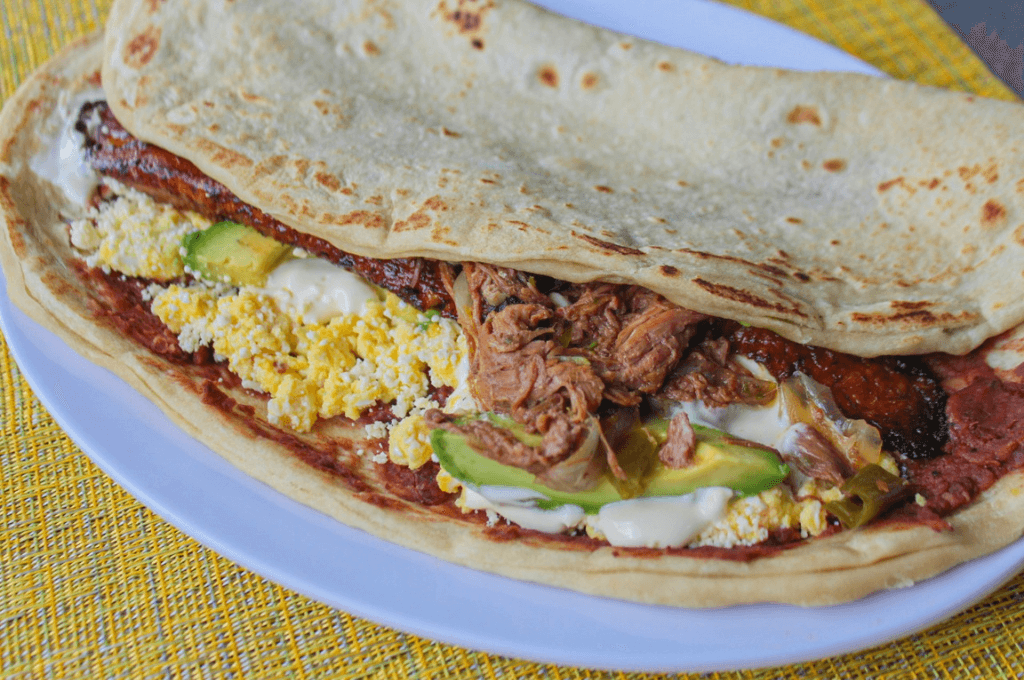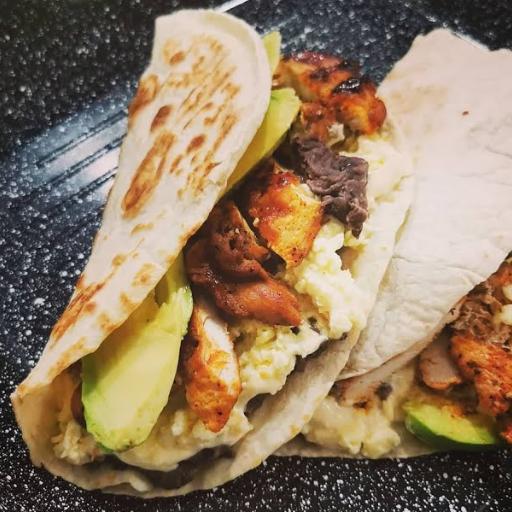How To Make Delicious Baleadas: A Honduran Delight!
Ever wondered what culinary treasure lies within the heart of Honduras? Prepare to have your taste buds tantalized by the Honduran Baleada, a street food sensation that's as diverse in its flavors as it is rich in history.
The baleada, a cornerstone of Honduran cuisine, is more than just a meal; it's an experience. At its core, its a simple concept: a thick, fluffy flour tortilla filled with a variety of ingredients. The most basic version, known as "baleada sencilla," typically features refried red beans, Honduran cream (mantequilla rala), and crumbled cheese. This humble beginning sets the stage for a world of flavor combinations.
To truly understand the baleada, it helps to delve into its origins. While the exact history is shrouded in the mists of time, its evolution reflects the resourcefulness and culinary creativity of the Honduran people. Flour, water, vegetable oil, egg, and salt form the dough, which is then kneaded until smooth and yielding. This dough, the foundation of the tortilla, provides the canvas upon which the flavors are painted.
Over time, the baleada has blossomed into a culinary chameleon, adapting to local tastes and preferences. The "baleada con todo," or "special baleada," is where the magic truly happens. Here, the simple tortilla transforms into a fiesta of ingredients, boasting a fried egg, various types of meat like chorizo or shredded beef, avocado, and sometimes even fried plantain slices. It's a true "flavor bomb!"
The versatility of the baleada is one of its greatest strengths. Beyond the "sencilla" and "con todo" variations, you'll find baleadas adorned with a variety of fillings. Some favorites include carne asada (grilled beef), chorizo, and even seafood, highlighting the adaptability of this beloved dish.
The preparation is straightforward. Mix flour, water, vegetable oil, egg, and salt in a large bowl. Knead the dough until it's smooth and no longer sticky. For the "baleada sencilla," simply add refried beans, cheese, and cream to the tortilla. To elevate your experience, consider adding a fried egg and your choice of meat, such as chorizo, shredded beef, or even carne asada. Avocado slices or fried plantains can add another layer of deliciousness.
Honduran Baleadas, much like their Central American cousins, Pupusas from El Salvador and Gorditas from Mexico, share the common element of the tortilla as their base. The key is in the quality of the ingredients and the love with which it's prepared.
Want to add a fresh element? Cover your baleada with a refreshing coleslaw of shredded cabbage, carrots, and bell peppers, seasoned with vinegar and sugar.
The "baleada mixta" often includes meat and avocado, it is a hearty, savory treat that's sure to satisfy. And if you're lucky enough to find a "baleada con todo," be prepared for a culinary adventure.
The journey of the Baleada is also a journey through the history of Honduras, a testament to its people's creativity, resilience, and passion for food. It's a dish that continues to evolve, reflecting the changing tastes and innovations of its creators.
Origin and Evolution of the Baleada: A Culinary Timeline
- Early Days: The baleada emerges as a simple street food, likely originating in the northern coastal regions of Honduras. - The "Sencilla" Era: The basic baleada, featuring beans, cream, and cheese, gains popularity as a quick and affordable meal. - Ingredient Expansion: The addition of eggs, meat, and avocado marks the advent of the "baleada con todo" (with everything). - Regional Variations: Different areas of Honduras begin to experiment with fillings, including carne asada, chorizo, and seafood. - Global Influence: The baleada travels with Honduran immigrants, gaining popularity in other parts of the world. - Modern Baleada: Today, the baleada remains a beloved icon of Honduran culture, constantly evolving to reflect contemporary tastes while staying true to its roots.
Here's a table of ingredients and their use in Baleadas:
| Ingredient | Description | Use in Baleada |
|---|---|---|
| Flour Tortillas | Thick, fluffy flour tortillas | Primary base for the baleada, providing the structure and flavor. |
| Refried Red Beans | Cooked and mashed red beans, often seasoned. | Main filling, providing a savory and hearty flavor. |
| Honduran Cream (Mantequilla Rala) | A thin, pourable cream with a slightly tangy taste. | Adds richness, moisture, and a distinctive Honduran touch. |
| Crumbled Cheese | Typically a salty, crumbly cheese like a local queso. | Adds a salty and creamy element to the dish. |
| Fried Egg | A fried egg, often with a runny yolk. | Adds protein, a creamy texture, and contributes to the "con todo" experience. |
| Shredded Beef or Chicken | Shredded, cooked meat. | Adds a protein element, flavorful element, and a substantial texture. |
| Carne Asada | Grilled beef, sliced or in strips. | A more premium meat option, offering a grilled flavor and different texture. |
| Chorizo | Sausage. | Adds a spicy and savory flavor. |
| Avocado | Sliced or mashed avocado. | Adds a creamy texture, a subtle flavor, and healthy fats. |
| Fried Plantains | Sliced and fried plantains. | Adds a sweet and savory flavor, providing a textural contrast. |
| Coleslaw | Shredded cabbage, carrots, and bell peppers with a vinegar dressing. | Adds a fresh, crunchy element and a tangy counterpoint to the rich fillings. |
| Other ingredients | sausage, chorizo, ham, | variety of flavors and texture. |


